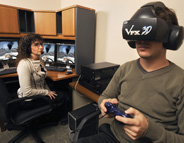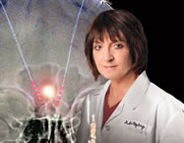 |
 |
|||||||
| January 24, 2012 | Research Extras Register for the 3rd annual Academic & Industry Intersection Conference, Feb. 9, 11:30-5:30 at the Emory Conference Center. Panelists will discuss the challenges and successes of comercializing new technologies through academic, industry, and government partnerships. George Painter, PhD, principal scientist, Emory Institute for Drug Discovery, will keynote the conference along with Wayne Hodges from Georgia Tech's Global Center for Medical Innovation. Learn more about core laboratories in Emory School of Medicine, including electron microscopy, genomics, imaging, flow cytometry, proteomics, and more. Visit Emory's Woodruff Health Sciences Center Library to see improvements in access, space, and facilities. A new ground-level entrance across from the Whitehead Biomedical Research Building replaces the second-floor entrance inside the building. Extensive interior renovations include more collaborative spaces and digital learning areas. Register for Spin to End, an indoor cycling event to raise money for the Emory Vaccine Center and to prepare for the AIDS Vaccine 200 bike ride in May.
|
|||||||
|
Helen Mayberg, MD |
||||||||
Deep Brain Stimulation Shows Promise in Treating Bipolar Depression |
||||||||
| Microneedle Technology Could Help Deliver Drugs within the Eye A startup company will use technology from Emory and Georgia Tech to develop microneedles for drug delivery to the back of the eye. Clearside Biomedical has received $4 million in venture capital funding to develop the microinjection technology. If proven successful in clinical trials, it could help physicians treat diseases such as age-related macular degeneration. Read more... |
||||||||
 Barbara Rothbaum, PhD, with a PTSD patient
|
||||||||
Treating the Psychological and Emotional Scars of War |
||||||||
| Lifestyle Interventions Can Delay or Prevent Type 2 Diabetes Structured lifestyle programs could halve progression to diabetes in people with prediabetes, according to a review of the Diabetes Prevention Program - a large national clinical study. The DPP provided participants with exercise shoes, meal replacement shakes, one-on-one coaching, gym memberships, etc. After a year, the average person had lost about four percent of body weight, offering possible diabetes protection. Read more... |
||||||||
|
|
||||||||
| Strengthening Bone with Silica Nanoparticles Tiny particles of silicon dioxide – essentially, extremely fine sand — can strengthen bones when introduced into mice, scientists have found. The particles stimulate the generation of bone-forming cells and inhibit other cells that break down bone. The discovery could someday form the basis for an alternative treatment for osteoporosis.. Read more and watch a video... |
||||||||
 |
 |
|||||||



